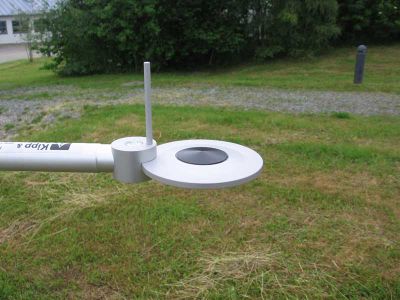Difference between revisions of "Net Radiation - Net Radiometer (NR-Lite)"
Jump to navigation
Jump to search
(→Links) |
|||
| Line 29: | Line 29: | ||
==Links== | ==Links== | ||
Projects that used the above equipment: | Projects that used the above equipment: | ||
| − | + | [http://www.gfz-potsdam.de/pb5/pb54/projects/Hygra/content.html HYGRA – The effect of water storage variations on in-situ gravity measurements and their use for hydrology] | |
Manufacturer: | Manufacturer: | ||
| Line 41: | Line 41: | ||
[http://www.campbellsci.com/documents/lit/b_nr-lite.pdf NR-Lite Brochure] | [http://www.campbellsci.com/documents/lit/b_nr-lite.pdf NR-Lite Brochure] | ||
[http://www.campbellsci.com/documents/manuals/nr-lite.pdf NR-Lite Manual] | [http://www.campbellsci.com/documents/manuals/nr-lite.pdf NR-Lite Manual] | ||
| − | |||
==References== | ==References== | ||
Revision as of 10:17, 18 March 2008
Parameter to be measured:
Net Radiation (spectral range 0.2-100µm): The net radiation is the energy balance between incoming short-wave and long-wave infrared (IR) radiation relative to surface reflected short-wave and outgoing long-wave IR radiation.
Method:
The NR-Lite sensor is a thermopile sensor. It has on both sides an black absorber and the sensors outputs a voltage. The vaoltage is proportional to the radiation
Equipment:
- NR-Lite sensor
- Mounting gear
- Logger
Advantages:
- Cheap compared to other net radiometers like the CNR 1 from Kipp & Zonen
- resistant
- measures the short and longwave radiation in one sensor
Disadvantages:
- not as precise as CNR 1 or comparable other sensors
- sensitive to wind speed
What to watch out for:
- keep the sensor clean
Problems/Questions:
Links
Projects that used the above equipment: HYGRA – The effect of water storage variations on in-situ gravity measurements and their use for hydrology
Manufacturer: Kipp & Zonen
Dealer: Campbell Scientific Thies Clima
Manuals and other resources: NR-Lite Brochure NR-Lite Manual
